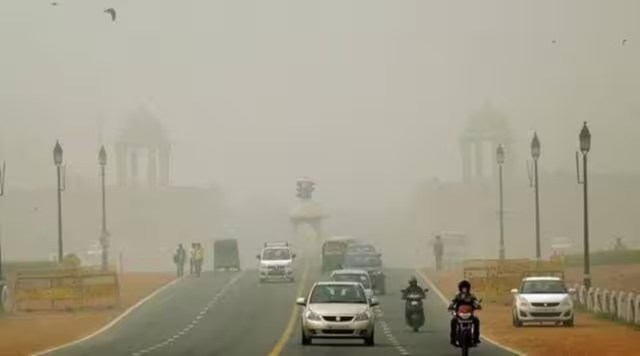For first time this season, air quality dips to ‘very poor’
AQI from 301 to 400 is considered to be ‘very poor’ and can cause “respiratory illness on prolonged exposure”, according to the CPCB.

Delhi’s air quality on Sunday deteriorated to the ‘very poor’ category, the first ‘very poor’ air day so far this season. According to the Central Pollution Control Board (CPCB), the AQI on Sunday was recorded as 313 with PM2.5 being the main pollutant; it deteriorated from 248 on Saturday. AQI from 301 to 400 is considered to be ‘very poor’ and can cause “respiratory illness on prolonged exposure”, according to the CPCB.
A forecast issued by the Air Quality Early Warning System on Sunday said that the air quality is likely to be in the ‘very poor’ category from October 23-25. For the subsequent six days, it is likely to remain in the ‘very poor’ to ‘poor’ category. It also mentioned that the AQI on Sunday would be in the ‘poor’ category, but air quality deteriorated further. Meanwhile, calm conditions prevailed on Saturday night, according to the early warning system.
The Commission for Air Quality Management (CAQM) invoked stage-II of the Graded Response Action Plan (GRAP) on Saturday considering the forecast that pointed to the likelihood of air quality deteriorating to be in the ‘very poor’ category.
With the temperature beginning to dip in Delhi, the maximum and minimum temperatures were below normal on Sunday. The minimum temperature early on Sunday was 15.6 degrees Celsius, three degrees below the normal, while the maximum temperature was 31.3 degrees Celsius, a degree below the normal.
The maximum temperature is likely to remain at around 31 or 32 degrees over the next six days, while the minimum temperature could be around 16 or 17 degrees, as per the India Meteorological Department (IMD) forecast. Cooler temperatures and calm conditions can prevent the dispersion of pollutants.
On Sunday, there were 22 rice residue burning events in Punjab and 25 in Haryana, according to data from IARI. This is down from 146 on Saturday and 174 on Friday in Punjab.







